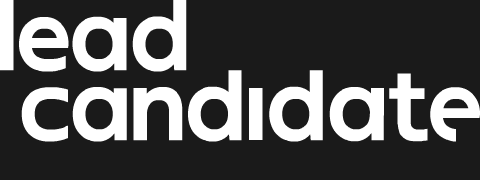
How to create a winning onboarding experience
28.05.25 GuidesPicture it, you’ve just focused all of your time into hiring an amazing person for your team. They’re set to join you in a few weeks. Now what?
Onboarding is an often overlooked, but nevertheless vital part of the hiring process.
Get it right, and you’ll create a winning experience that not only nurtures talent, but retains it.
Get it wrong, and you risk a vicious cycle of hire, lose, and rehire.
The first 90 days of employment is the ‘make or break’ period for a new starter, with 1 in 3 employees leaving during this period.
A well-rounded onboarding process goes beyond the paperwork – it immerses new hires in company culture, equips them with the right tools and training to succeed, and builds long-lasting connections needed to thrive within a well-established team.
Below, we’ve shared our top tips and tricks for a great onboarding experience – but remember, this isn’t a one size fits all approach. Onboarding for a 250 person strong CDMO is going to look wildly different to that of a startup with three team members. It’s up to you to discover which training style works best for you and your team.
(Don’t forget to download our handy interactive Onboarding Checklist to make sure you’re all set!)
1. First things first…
Make sure you have everything set up and ready to go:
- Send over the important details – contracts, company policies, contact details
- Double check that everything is in place to ensure a smooth first day – detailed schedule, equipment, IT logins
- Last but not least, a quick, personalised welcome from key contacts goes a long way towards making new hires feel like part of the team
2. Settle the first day nerves
Day one is all about making a new employee feel comfortable, confident, and ensuring they have a comprehensive understanding of their role.
- This includes team introductions and orientations – the more genuine the better!
- If you can, why not arrange an informal lunch to kickstart connections?
- A workplace buddy system is also a great way to provide an approachable point of contact for a new starter.
3. 30-60-90 day plan
Another big part of a successful first day is setting initial expectations – this includes putting in place a detailed onboarding roadmap. We recommend a 30-60-90 day plan, a document which outlines key goals and milestones for the first three months of employment.
- The first 30 days are dedicated to learning the basics of the role, getting immersed in company culture, and building long-lasting relationships with colleagues.
- Month two is all about putting new skills into practice, taking on new tasks, and getting familiar with company processes. This is a key learning phase, so mistakes are expected – use them as a teaching exercise!
- By month three, the employee should be hitting their stride, confident in the role, and starting to achieve long term performance goals.
Breaking things down into clear, manageable steps combats overwhelm and sets up a path of progress.
Don’t forget! Weave in real-time, one-to-one feedback throughout this process in order to build trust and support long-term retention.
4. Moving forward
Onboarding shouldn’t end after the first week, or even month – this is where many go wrong. A sustainable onboarding process ensures new hires evolve with the company and remain fully engaged in their role.
This requires regular check-ins, team socialisation opportunities, and celebrating milestones (both big and small!).
Even when they appear settled in, don’t make the mistake of leaving new employees to completely fend for themselves – behind the scenes support goes a long way towards nurturing long-lasting company commitment.
Things to avoid:
⚠️ TMI too soon – Throwing everything at a new hire on the first day is the quickest way to drive them away. Breaking things down day by day is a much less intimidating way to introduce them to their new role.
⚠️ Badly structured check-ins – It’s important to check in at the right time, and for the right reasons. Make sure your catch ups are scheduled in alignment with key milestone dates, and that they’re designed to catch any developing issues before they evolve further.
⚠️ Leaving out key business contacts – Overlooking this isolates new hires and can create confusion down the line. Opening up communication with the whole team early on goes a long way.
Here at Lead Candidate, we respect and understand the need for good onboarding. Talent scarcity and high turnover are among the biggest challenges plaguing organisations today, so it’s important to engage and retain employees from day one – a strong process can help you accomplish that.

